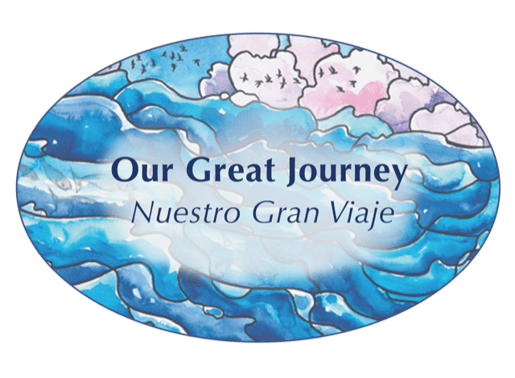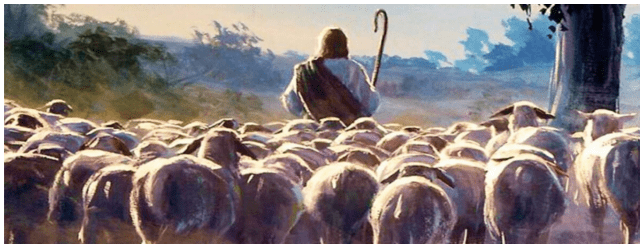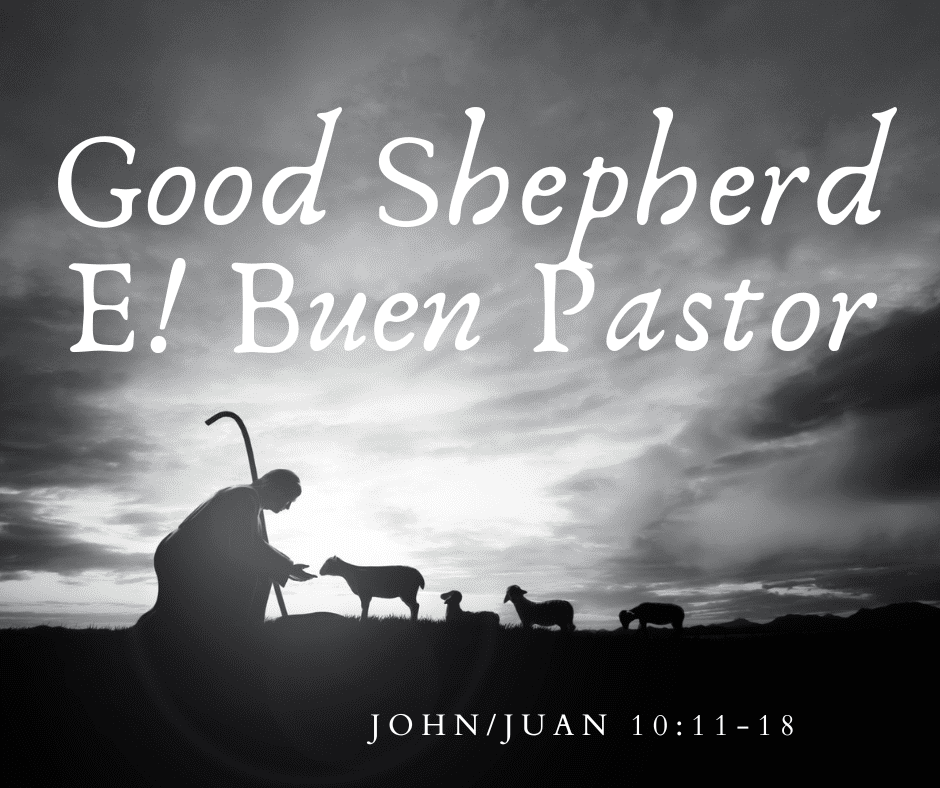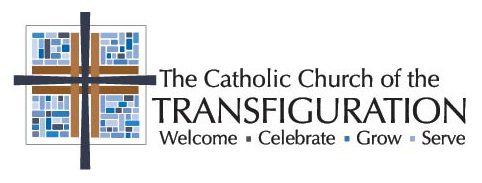
Our Great Journey
This week our theme is “Good Shepherd/ El Bueno Pastor” based on John 10:11-18/ Juan 10:11-18
All pray the Sign of the Cross
Lord, Jesus Christ, we rejoice with all of creation because you have risen from the dead. As we celebrate the Great 50 Days of Easter, help us to understand the meaning of your empty tomb: death does not have the last word; light will triumph over darkness; sadness will be conquered by hope. Make us people of life, light and hope and help us to show and share our Christian joy with all. Amen. Alleluia.
In addition to our prayers from the heart, our prayer for April is The Prayer to the Holy Spirit. Please pray these prayers daily to learn.
Using the Bible, invite a family member to read the Gospel aloud.
Things to talk about:
- Compare and contrast the behaviors of the good shepherd and the hired man in today’s Gospel story.
- Sheep rely on their shepherd for everything they need. How do you trust in Jesus and depend on him to give you what you need?
- Why is this image of Jesus as the Good Shepherd such an important one?
- Think about who you can extend the love of the Good Shepherd to this week.
Things to do:
- · The image of sheep reminds us the lambs’ wool is used to make warm clothing. One of the corporal works of mercy is to clothe the naked. Even though the weather is turning warmer, many still have a need for clothing. What donations can your family make to the St. Vincent de Paul Thrift Store? Each morning this week, as you dress for school or work, pray for those who are in need of good clothing.
- Have Shepherd’s Pie with Roasted Potatoes for dinner one night this week, www.kevinandamanda.com/easier-shepherds-pie-with-roasted-potatoes/print-recipe/35342/
Closing Prayer
In the name of the Father and of the Son and of the Holy Spirit. Amen.
Psalm 23 Meditation
Invite everyone to close their eyes and imagine themselves sitting on the grass in a beautiful meadow by a stream gurgling with cool, clear water. Imagine they feel the warm sun with a gentle breeze blowing. Can they hear the birds signing? Read Psalm 23 slowly. Spend a few minutes in quiet and then ask each person how they felt during the meditation.
Name those who need our prayers. Close with the Sign of the Cross.


Catholic Insights
Jesus uses the image of the Good Shepherd in this Gospel to comfort the Apostles and remind them that he will always be with them.
The people to whom Jesus ministered implicitly understood how all encompassing the shepherd’s care was. Sheep are incapable of protecting themselves from predators. They also have no sense of direction, if they lose sight of the shepherd, they are lost. The shepherd watches over the flock and leads them to water and grass. He tends to the sheep who get hurt or sick.
When we look at the words Jesus speaks about the “other sheep,” we understand the Church’s emphasis on ecumenism (harmony and unity among all Christians). Jesus became human to save all human beings. We, as disciples, are called to extend the love we have experienced in our hearts to all, no matter who they are.
Do you know That the first people to whom the birth of Jesus was announced by an angel were shepherds? They responded to this good news and joyfully paid homage to the newborn king, Jesus.
Some sheep facts:
- Sheep have a thick coat of wool on their body which is called a fleece. The fleece can be made into a fiber called yarn.
- Other parts of the sheep are used to make things such as insulation, baseballs, upholstery, crochet needles, and tennis balls.
- Oil from the wool of sheep is called lanolin and is used to make beauty products such as lotions and creams.
- There are many words to learn when talking about sheep:
- The female sheep is called a ewe.
- A male sheep is called a ram. Rams, which are larger than ewes, and sometimes fight with each other to prove who is the strongest.
- The young sheep are called lambs.
- Sheep eat facing the same direction, always keeping the wind blowing toward them. Each sheep usually keeps two other sheep in sight when feeding.
- Sheep move around in large groups called flocks.
- Sheep farms may have little flocks of 50 to 200 sheep.
- Larger operations may have 1,000 to 5,000 sheep.
- Little flocks of 10 or fewer sheep may belong to people who like to dye and knit yarn that is made from the sheep’s wool.

Leave a Reply